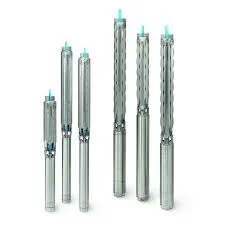កញ្ញា . 10, 2024 03:10 Back to list
Troubleshooting Submersible Pump Not Pumping Water
Troubleshooting a Submersible Pump Not Pumping Water
Submersible pumps are widely used in various applications, such as groundwater extraction, draining flooded areas, and even in wastewater treatment systems. However, it can be frustrating when your submersible pump stops pumping water. Understanding common causes and troubleshooting methods can help you diagnose and resolve the issue effectively.
Firstly, one of the most frequent reasons a submersible pump may not be pumping is a power supply issue. Ensure that the pump is correctly plugged in and that the circuit breaker has not tripped. Use a multimeter to check whether electricity is reaching the pump. If there’s a problem with the power supply, it may require consultation with an electrician.
Another common issue is a clogged intake. Debris, silt, and other materials can accumulate in the pump's intake screen, preventing water flow. Regular maintenance is essential to prevent clogs should this occur. Inspect the intake for blockages and clean it thoroughly. If your pump is in a muddy area, sediment can enter the pump, leading to further issues if not periodically removed.
submersible pump not pumping water

Additionally, check the pump's float switch. Submersible pumps often use float switches to detect water levels and control operation automatically. If the float switch is stuck, damaged, or improperly positioned, it might prevent the pump from starting. Ensure the float moves freely and make necessary adjustments. In some cases, you may need to replace the float switch if it’s malfunctioning.
Furthermore, overloading can also cause a pump to fail. If the pump is too small for the application it’s being used for, it may struggle to move water effectively. Review your pump's specifications to ensure it matches the requirements of your system. If it’s undersized, consider upgrading to a larger pump capable of handling the workload.
Lastly, consider the possibility of mechanical failure within the pump. The impeller may be damaged or worn out, or more serious mechanical issues could be present. If you suspect internal damage, disassembling the pump for inspection might be necessary. In some cases, repairing or replacing internal components can restore functionality.
In summary, if your submersible pump is not pumping water, start troubleshooting with power supply checks, inspect for clogging, assess the float switch, evaluate its capacity for the task, and consider potential mechanical failures. By systematically addressing these areas, you can efficiently diagnose the problem and restore your pump’s performance. Regular maintenance practices will help prevent future issues and ensure longevity of your submersible pump.
-
Submersible Water Pump: The Efficient 'Power Pioneer' of the Underwater World
NewsJul.01,2025
-
Submersible Pond Pump: The Hidden Guardian of Water Landscape Ecology
NewsJul.01,2025
-
Stainless Well Pump: A Reliable and Durable Pumping Main Force
NewsJul.01,2025
-
Stainless Steel Submersible Pump: An Efficient and Versatile Tool for Underwater Operations
NewsJul.01,2025
-
Deep Well Submersible Pump: An Efficient 'Sucker' of Groundwater Sources
NewsJul.01,2025
-
Deep Water Well Pump: An Efficient 'Sucker' of Groundwater Sources
NewsJul.01,2025
-
 Submersible Water Pump: The Efficient 'Power Pioneer' of the Underwater WorldIn the field of hydraulic equipment, the Submersible Water Pump has become the core equipment for underwater operations and water resource transportation due to its unique design and excellent performance.Detail
Submersible Water Pump: The Efficient 'Power Pioneer' of the Underwater WorldIn the field of hydraulic equipment, the Submersible Water Pump has become the core equipment for underwater operations and water resource transportation due to its unique design and excellent performance.Detail -
 Submersible Pond Pump: The Hidden Guardian of Water Landscape EcologyIn courtyard landscapes, ecological ponds, and even small-scale water conservancy projects, there is a silent yet indispensable equipment - the Submersible Pond Pump.Detail
Submersible Pond Pump: The Hidden Guardian of Water Landscape EcologyIn courtyard landscapes, ecological ponds, and even small-scale water conservancy projects, there is a silent yet indispensable equipment - the Submersible Pond Pump.Detail -
 Stainless Well Pump: A Reliable and Durable Pumping Main ForceIn the field of water resource transportation, Stainless Well Pump has become the core equipment for various pumping scenarios with its excellent performance and reliable quality.Detail
Stainless Well Pump: A Reliable and Durable Pumping Main ForceIn the field of water resource transportation, Stainless Well Pump has become the core equipment for various pumping scenarios with its excellent performance and reliable quality.Detail
